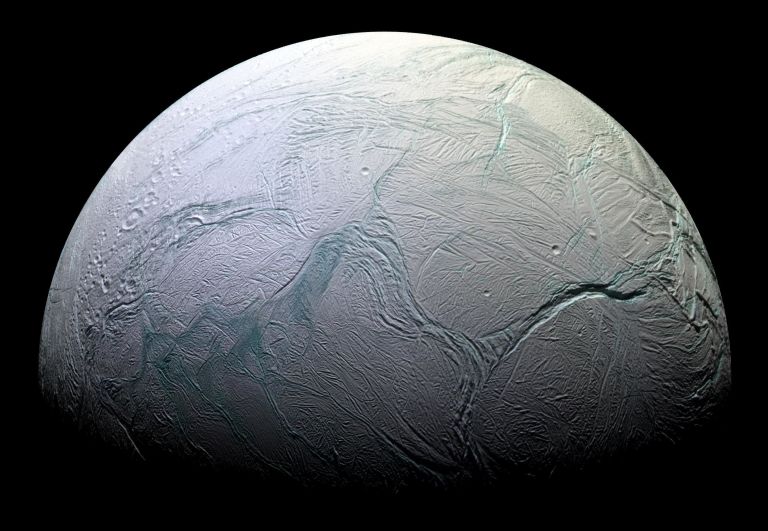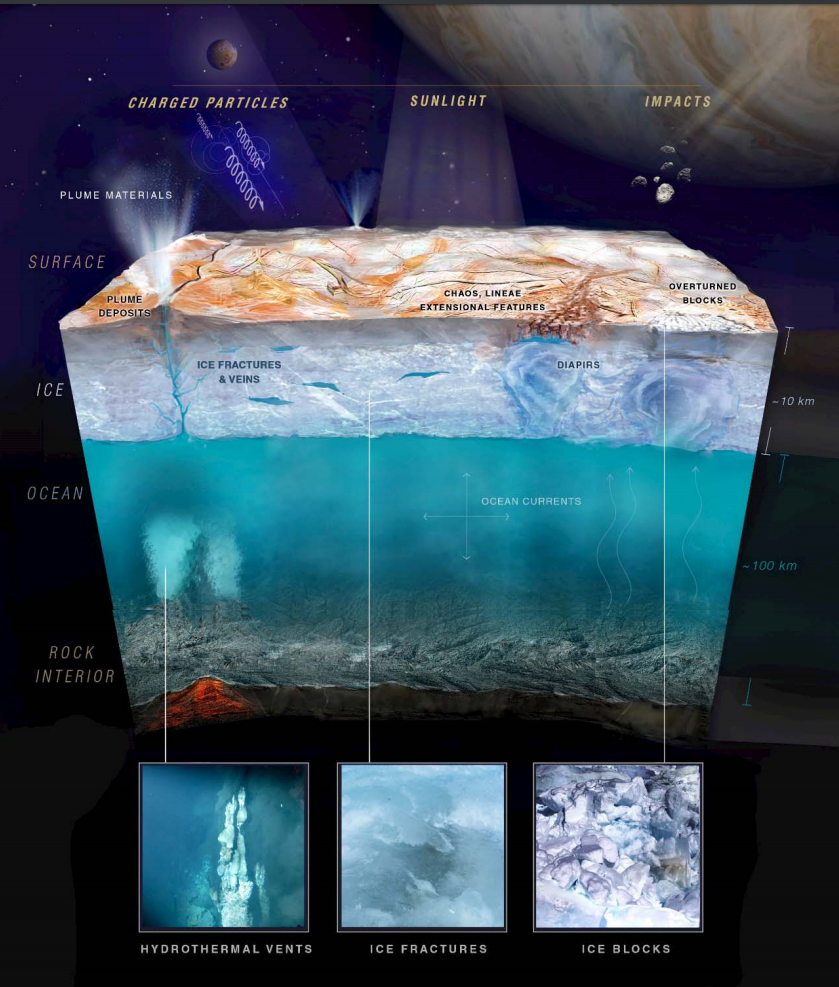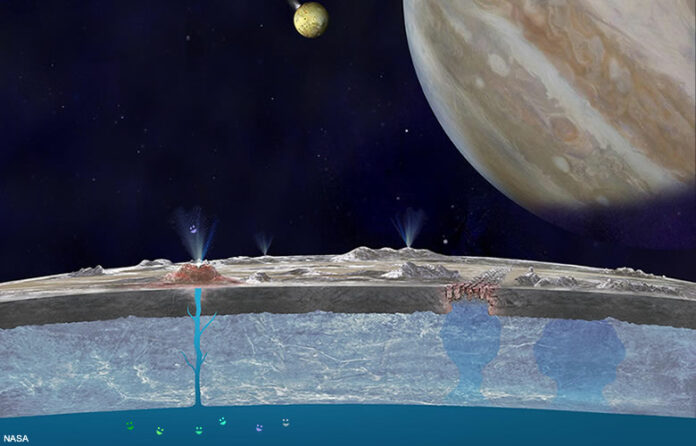NASA will discuss new results about ocean worlds in our solar system from the agency’s Cassini spacecraft and the Hubble Space Telescope during a news briefing 2 p.m. EDT on Thursday, April 13. The event, to be held at the James Webb Auditorium at NASA Headquarters in Washington, will include remote participation from experts across the country.
The briefing will be broadcast live on NASA Television and the agency’s website.
These new discoveries will help inform future ocean world exploration — including NASA’s upcoming Europa Clipper mission planned for launch in the 2020s — and the broader search for life beyond Earth.
By NASA
There are many places in Solar System where water can be found lets name some of them:
Europa
Europa has been the biggest contender for life for years now, with a craggy icy crust hinting in almost every way at an ocean below. Thanks to the tidal effects from Jupiter (friction inside the moon created by the pull of the planet’s gravity), the water would be kept liquid and possibly even warm below the icy crust, helped by possible hydrothermal vents.
There’s been some evidence of ice geysers shooting from the surface of Europa, as well as evidence that the ocean could have Hadley Cells—warm water radiating from the moon’s equator. Europa could provide the possibility not just for life, but, if the conditions were just right, even complex life.


Enceladus
We’ve known of tiny, sleepy Enceladus since 1789. The diameter is just 310 miles, smaller even than Ceres and Vesta, the two largest objects in the asteroid belt. Compare that to Europa, slightly smaller than our Moon at a 1,950 mile diameter. Never mind its small size: This is one of the most intriguing places in the solar system and best candidates for a warm, wet, salty ocean. It has as high a probability for life, if not higher, than Europa.
Enceladus orbits near the rings of Saturn. In fact, watery eruptions from Enceladus’ ice geysers comprise the F-Ring of the gas giant—the moon spews 1,000 tons of water into space every hour, according to Phil Plait at Bad Astronomy, along with organic molecules, salt, and other materials. Recent research suggests the ocean is also very warm thanks to the tidal effects from Saturn. The tug causes hydrothermal activity, which warms the oceans and causes the geysers, all in the kinds of hot beds that sprouted life on Earth.


Europa is strongly believed to hide a deep ocean of salty liquid water beneath its icy shell. Whether the Jovian moon has the raw materials and chemical energy in the right proportions to support biology is a topic of intense scientific interest. The answer may hinge on whether Europa has environments where chemicals are matched in the right proportions to power biological processes. Life on Earth exploits such niches.
Europa is nearly the size of Earth’s moon. Under an icy crust maybe 10 to 15 miles (15 to 25 kilometers) thick, investigators think Europa possesses an ocean perhaps up to 100 miles (160 km) deep. Since there is life virtually wherever there is water on Earth, researchers have long entertained the notion that Europa could support life.
Europa’s icy shell would hide its ocean from view. However, clues about how this underground ocean behaves might be deduced from the moon’s crust, especially areas known as chaos terrains, where the ice has mysteriously warped and broken into jumbled blocks. These strange regions cover up to 40 percent of Europa’s surface, clustered mostly around the Jovian moon’s equator.
The origins of chaos terrain are strongly debated, but scientists think the way heat flows in the ocean beneath such terrain is critical to the explanation. To see what behavior from the underground ocean might be giving rise to chaos terrain, planetary geophysicist Krista Soderlund at the University of Texas at Austin and her colleagues devised computer models of how sea currents might circulate.
Tantalizing geological evidence of subsurface oceans on Saturn’s moon Titan has some NASA scientists convinced that the conditions necessary to create and sustain alien life could be present on the frozen moon. More exciting is the news coming out of the study of Europa, a tiny ocean-covered moon of Jupiter. NASA has discovered a wealth of data about conditions on Europa that has some astronomers speculating that Europa’s cold, deep oceans might harbor life near the moon’s warm core.
This data has some NASA scientists so convinced of the possibility of life on Europa that the agency has released an official report outlining a new Europa lander mission. The 264-page report details how the new Europa Lander will be the first surface-based search for life since the Mars Viking missions of the 1970s:
The report lists various studies of three Earthly ecosystems which have similar geological conditions to Europa’s: deep, lightless polar oceans, subglacial aquatic environments, and “cold, deep brines.” Life has been found in these harsh, unforgiving conditions on Earth, giving hope that Europa’s cold dark waters could sustain microbes at the very least. Me, I’ve got my hopes set on giant two-headed radioactive space whales. NASA’s already got deep space submarines in the works to explore alien oceans, so all we need to do is get one to Europa and bingo: space seafood – I mean, interesting scientific research. We’re all looking at you, Elon Musk.
Sources:
NASA
Mysterious Universe
Popular Mechanics
Space
Best Regards
TBU NEWS



